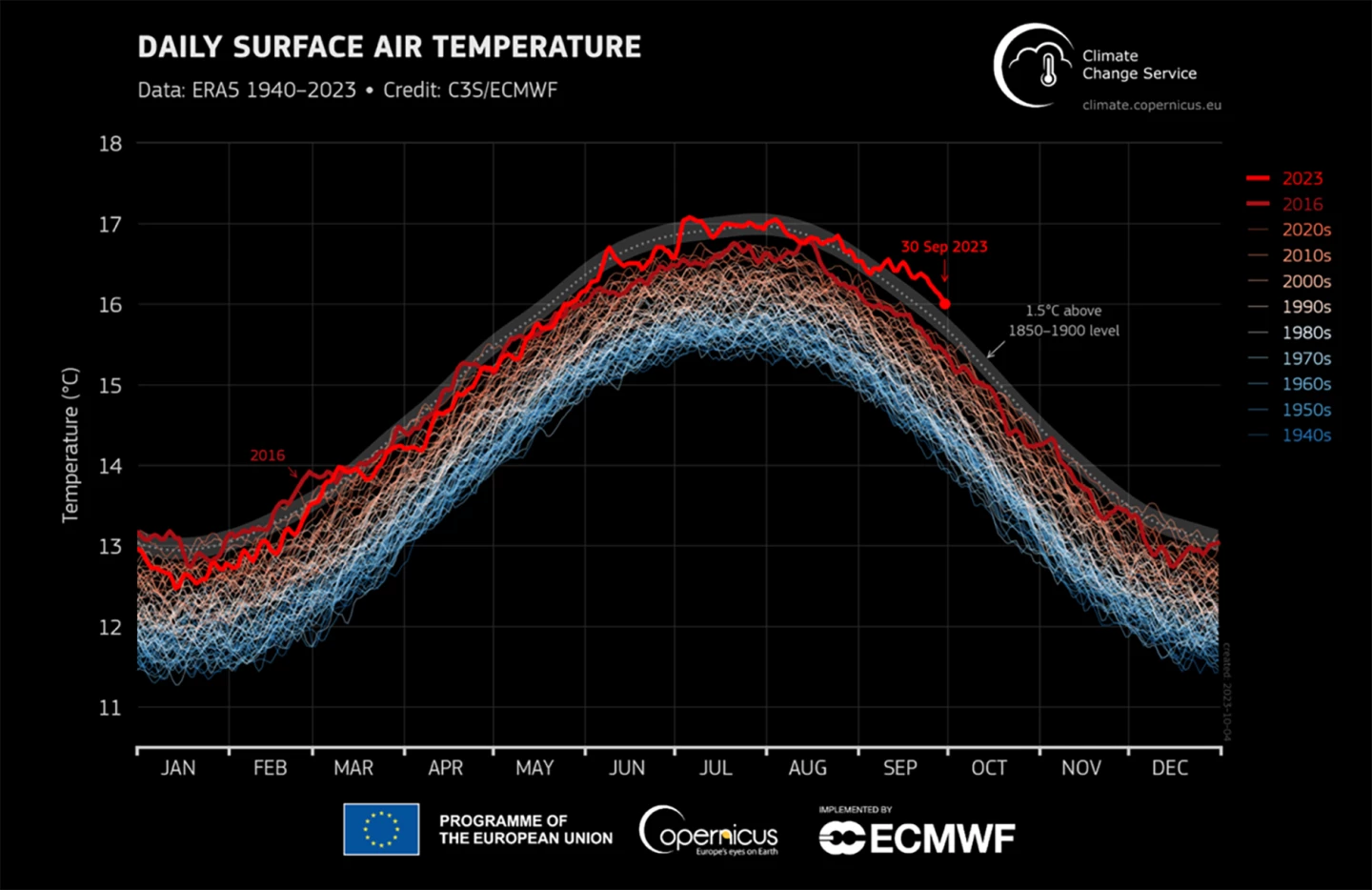With a continuing hot streak felt across the Earth, 2023 is now on track to be the warmest year on record. And September was no exception; in fact, it broke existing records by a large margin, according to the World Meteorological Organization (WMO).
According to the EU’s Copernicus Climate Change Service (C3S), September had an average surface temperature of 16.38 °C (61.48 °F), 0.5 °C (0.9 °F) above the temperature of the previous warmest September in 2020 and about 1.75 °C (3.15 °F) warmer for the month compared to the preindustrial reference period, 1850 to 1900. And the temperature is not expected to drop any time soon.
“Since June, the world has experienced unprecedented heat on land and sea,” said Petteri Taalas, the WMO’s Secretary-General. “The temperature anomalies are enormous – far bigger than anything we have ever seen in the past. Antarctic winter sea ice extent was the lowest on record for the time of year. What is especially worrying is that the warming El Niño event is still developing, and so we can expect these record-breaking temperatures to continue for months, with cascading impacts on our environment and society.”

WMO combines the C3S dataset, called ERA5, with five other leading international datasets for its climate monitoring activities. Their provisional State of the Global Climate 2023 report will be released at the start of the UN climate change conference, COP28, being held in Dubai in November.
“The unprecedented temperatures for the time of year observed in September – following a record summer – have broken records by an extraordinary amount,” said Samantha Burgess, Deputy Director of C3S. “This extreme month has pushed 2023 into the dubious honor of first place – on track to be the warmest year and around 1.4 °C [2.5 °F] above preindustrial average temperatures. Two months out from COP28 – the sense of urgency for ambitious climate action has never been more critical.”

Things are just as bad at sea, too. The average sea surface temperature for September over the extrapolar ocean reached 20.92 °C (69.66 °F), the highest on record for the month and the second highest across all months, behind August 2023. And, for the fifth consecutive month, Antarctic sea ice extent remained at a record low level for the time of year. The average extent for September was 9% below the 1991-2020 average for the month, the lowest for the month and the lowest annual maximum within the 45-year satellite dataset.
However, the WMO says that September’s record-breaking temperatures on land and at sea don’t mean we’ve exceeded the 1.5 °C (2.7 °F) level specified in the Paris Agreement because that refers to long-term warming over many years.
September’s figures appear in a new synthesis report published by UN Climate Change, to help governments undertake a ‘global stocktake’ at COP28 that will inform the next round of climate action plans under the Paris Agreement.
“The report is again telling us the world is off track,” said Sultan Al Jaber, COP28 President-Designate. “COP28 is the moment for all Parties to come together and put actionable solutions on the table. We must be ready with real answers to tackle the challenges.”
Sources: WMO, UN Climate Change







